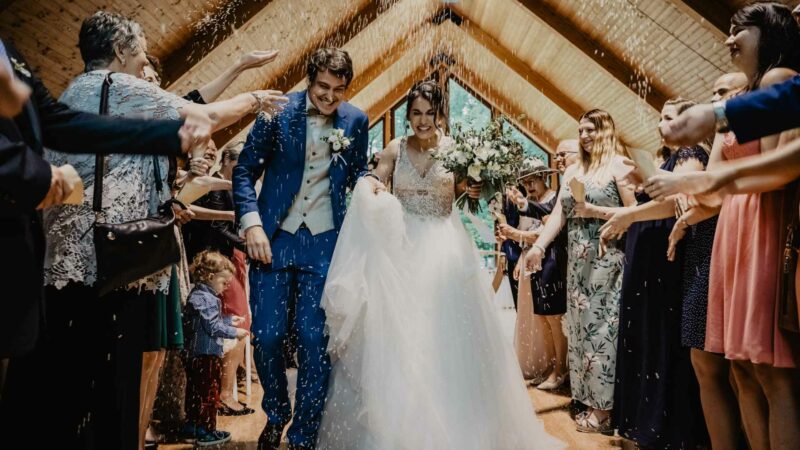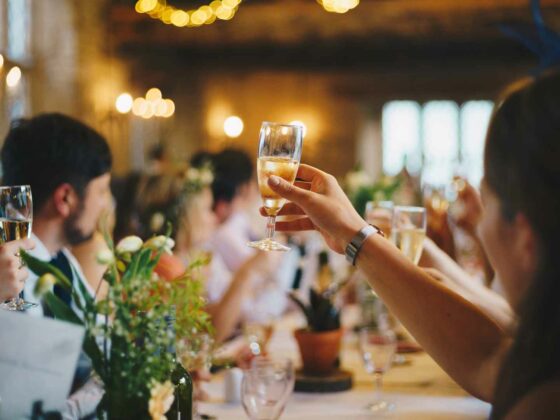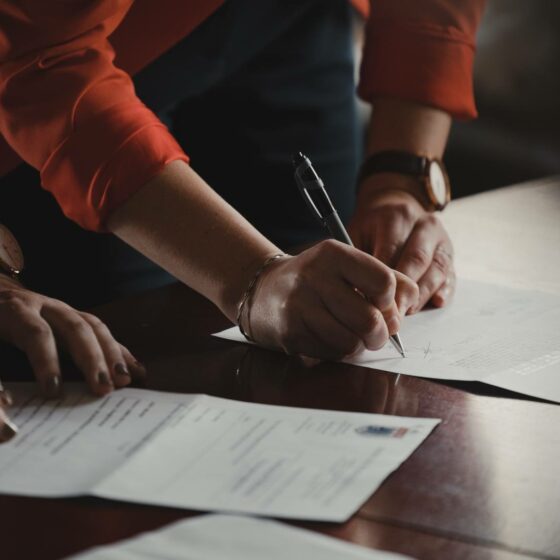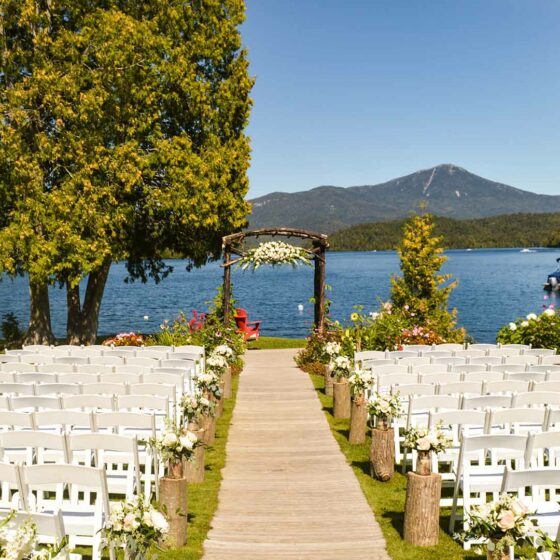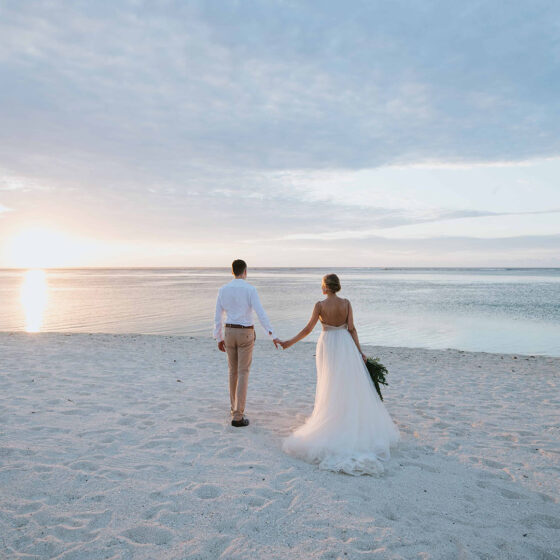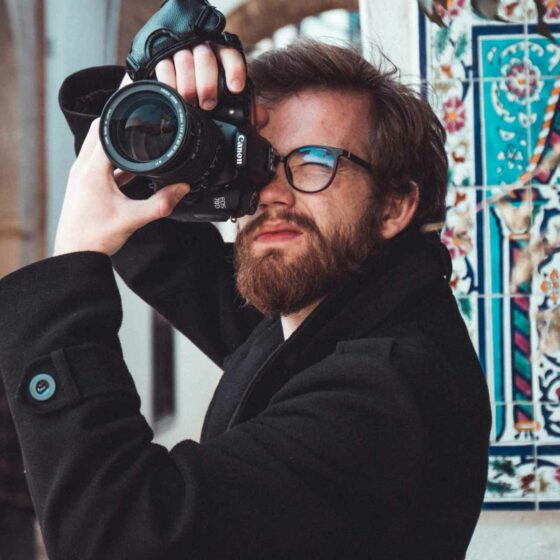Every wedding ceremony across the world comprises several events that lead to the union of the bride and groom and them being formally married to each other. However, every wedding is different from the other. A Catholic wedding ceremony, for instance, has hardly anything in common with a Hindu wedding ceremony. Therefore, to understand the order of events during a wedding ceremony, you have to first understand the way different kinds of wedding ceremonies are organized and the order of events in a wedding ceremony.
As a general rule, a Christian wedding ceremony starts with a procession that is marked by a music piece, and the bride is ushered to the venue by the bridal party. A Hindu wedding ceremony consists of several traditional rituals related to the Hindu belief and is very different from the way a Christian wedding ceremony is conducted.
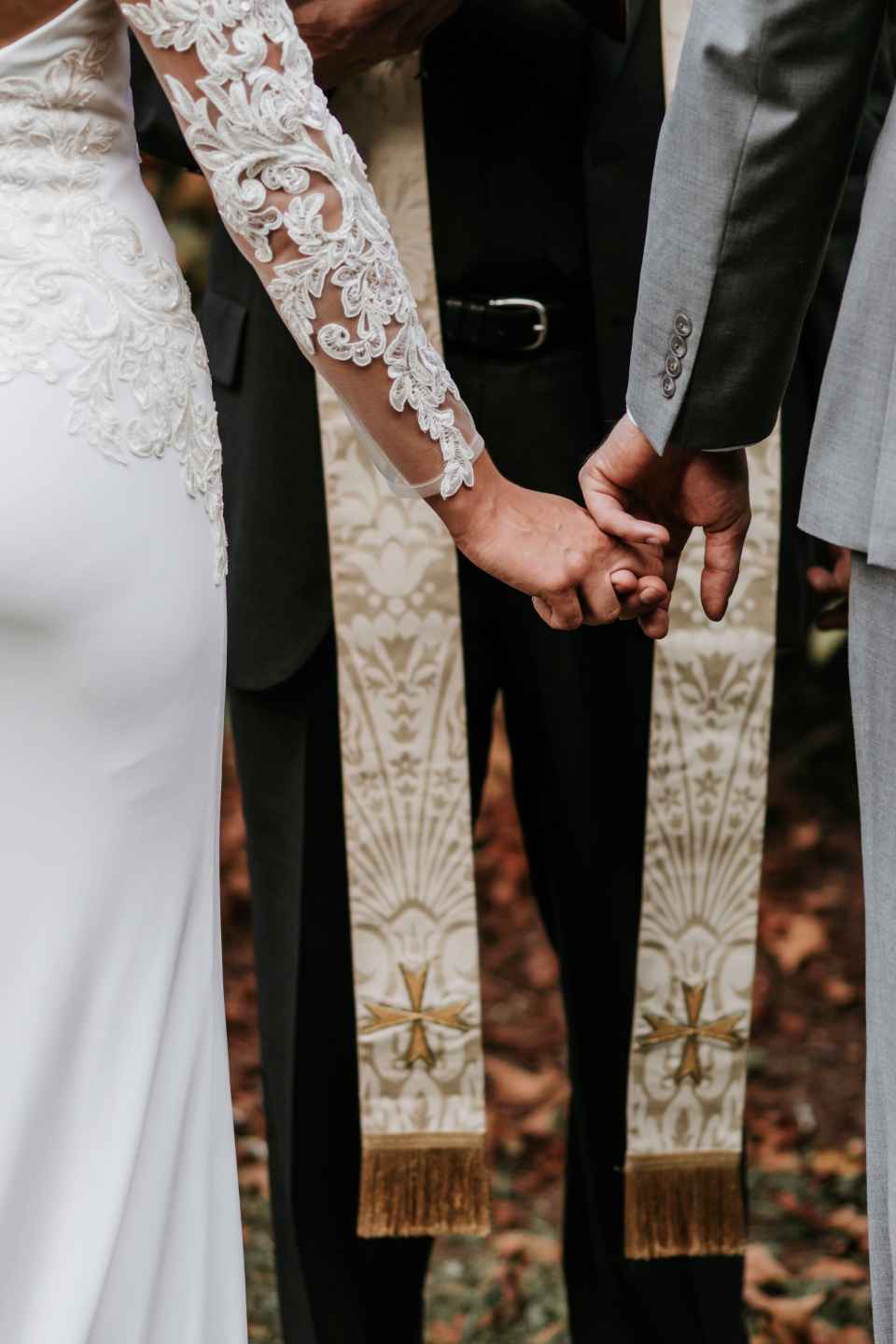
What is the correct order of a Catholic wedding ceremony?
Following is the order in which a Catholic wedding ceremony is conducted.
The processional
During the processional, the groom and the best man are expected to arrive from one corner of the church. After that, the bridesmaids and the groomsmen walk toward the aisle. This is followed by the entry of the maid of honor, who comes alone. Finally, the ‘grand entry’ happens with the bride arriving with her father. There is also an alternative option. The couple could enter the church, accompanied by the wedding party and the priest.
Greeting of the priest
The priest addresses the guests who have turned up for the wedding and requests them to join him in the rendition of the opening hymn. After the completion of the hymn or the song, the priest will say a prayer for the couple. The guests who have assembled at the church shall remain in a standing position throughout this.
Liturgy of the Word
The Liturgy of the Word consists of a bunch of readings that are recited by the family members of the couple or the priest himself. It starts with a recital of a passage from the Old Testament. Many times, couples read a passage from the book of Genesis that is based on the story of Adam and Eve. After this, the cantor and the congregation will either recite a passage or sing from the Book of Psalms.
Rite of Marriage
This is when the couple takes the vows. These vows symbolize the declaration of consent and intent by the couple. The couple gets two options here. They could either recite the vows after memorizing or read them directly from the book. They could also opt for the third option in which the priest reads out to the couple and they say, “I do”. The exact wording of the vows may differ from church to church but the pattern largely remains the same. There have been instances when priests have agreed to the couple penning down their vows.
Ring ceremony
Once the couple is done saying their vows, they will exchange the rings. The rings symbolize love, togetherness, and fidelity. The bride will slide the ring into the groom’s ring finger and the same process will be performed by the latter. The priest will bless the couple.
Nuptial mass
Whether they wish to take part in a nuptial mass or not is something the couple has to decide. If they opt for this ceremony, they have to choose a few members of their family and friends to help them out during the offertory. An altar is put together for the congregation and the cantor. An offertory song is played out during the ceremony and a basket or bowl for donations is moved around the assembly. After this, the Eucharistic prayers will be delivered by the priest.
Prayer to the Lord and sign of peace
The priest requests the congregation to stand up and sing or recite the prayer to the Lord together. Once the prayer is over, the bride and the groom will kneel closer to the altar and the priest will offer them nuptial blessings. The guests might be asked to stand up for silent prayer and to bless the couple. A sign of peace is exchanged between the wedding party and the guests by shaking hands and uttering the phrase ‘peace be with you’.
Holy Communion
The Holy Communion is also referred to as the Eucharist by many. It exemplifies the Last Supper during which Lord Jesus had food with disciples before being hung to death. During this ceremony, guests will get up from their seats and make a queue to receive their share of bread and wine. Only Catholics are allowed to be a part of this event.
Dismissal of Congregation
The priest will request the guests to stand and start reciting the final prayer. Through the prayer, he will offer his blessings to the couple and all the people gathered for the ceremony. After this, the couple will be directed to put their signatures on the marriage license. Finally, the priest will announce the dismissal of the congregation.
What is the correct order of a Jewish wedding ceremony?
Following is the order in which a Jewish wedding ceremony is conducted.
Ketubah signing
The first event that takes place during a Jewish wedding ceremony is brief but very important. An ancient document, Ketubah can be referred to as the marriage contract for Jewish weddings. It symbolizes the commitment of the groom to spend the rest of his life with the bride. Two Jewish witnesses, who must not be related to either the bride and the groom, are expected to sign the document.
Badeken
After the Ketubah signing process, one proceeds towards another ritual called Badeken. During this ritual, the groom covers the face of the bride with her veil. The origin of this ritual can be traced back to the Biblical times when Jacob, who was supposed to marry Rachel, went on to marry Leah as he couldn’t see her face through her veil. The bride and the groom are not supposed to see each other at least for 24 hours before this ritual takes place.
Chuppah
The wedding party will now arrive in the area where the main ceremony is being conducted and guests are seated. Chuppah refers to the ceremony’s focal point where you can see a canopy supported by four poles. The chuppah is symbolic of the home that the couple will be residing in after their marriage. The bride and the groom will be required to stand right at the center of the chuppah and the guests will stand around them, almost forming a wall to their ‘home’.
The Betrothal’s Blessings
Two cups of wine are brought in during this ritual. The betrothal’s blessings and the rabbi’s recitation accompany the first cup. Once the recitation is over, the couple shall drink the wine from the cup. The betrothal’s blessings stand for the couple’s resolve to make a Jewish home that would be dedicated towards the upliftment and growth of humanity.
Ring Offering
Marriages are recognized by Jewish law once the groom gives a valuable object to the bride. Traditionally, this ‘object of value’ is the ring that the groom offers to the bride. It is recommended to use a simple ring for this ceremony; one which would reflect the simplicity of the bond shared by the bride and the groom.
Ketubah Reading
Now, the Ketubah will be read by the priest in the Aramaic text that it was originally written in. The priest gives a copy of the Ketubah to the groom, who will then pass it on to his bride. The bride is expected to hold on to it and preserve it till the time they are married. The Ketubah holds as much significance as a legally binding agreement.
The Seven Blessings
The recitation of the Sheva Brachot or the Seven Blessings happens over the second cup of wine. What makes these blessings special is the fact they are ancient and have been used during Jewish weddings since time immemorial. After the seven blessings have been recited, the couple shares the second cup of wine.
Glass Breaking
The ceremony concludes with the groom stamping his foot on the glass and breaking it. It serves as the official signal of the party getting started. The breaking of the glass symbolizes several things including the demolition of the Jerusalem Temple more than 2000 years ago. It is also believed by some that the loud noise produced by the breaking of the glass drives malicious spirits away.
Yichud
Once the bride and the groom walk out of the ceremony area, the last segment of the order of service, referred to as the Yichud, commences. It is often said that Yichud is one of the most intimate events of the day. This is the time during which the newly married couple and the family introspect and reflect on how or if they feel their life has changed after the marriage.
What is the correct order of a Hindu wedding ceremony?
Following is the order in which a Hindu wedding ceremony is conducted.
Groom’s arrival
The arrival of the groom marks the beginning of the wedding proceedings. The groom’s arrival, accompanied by the wedding party and vibrant music, is nothing short of a celebration. Once all the guests have arrived, they are divided into two parts. One group represents the groom and the other represents the bride.
The Bride’s father gives her away
The bride is accompanied by her father to the main ceremony area. She is expected to be dressed in a saree or a similar costume for the wedding. In Hindu tradition, the tradition of handing over the bride by the father is referred to as ‘kanyadaan’. The bride’s father places the hands of his daughter into the groom’s hands. This symbolizes the fact that he is giving her away to him through this marriage.
Wedding rituals begin
Under a wedding mandap, the main wedding ritual begins. The mandap is an elevated platform that is embellished with flowers and other decorative material. In the center of the mandap, one can vividly see the fire burning. This fire is considered to be the witness to the marriage. The brother of the bride offers three fistfuls of rice to the bride. The bride then offers the rice to the fire a couple of times. Since Lord Ganesha is considered to be the God of good fortune and new beginnings, a prayer is made to him.
Garlands are exchanged
The garlands, also referred to as the jai mala, are exchanged between the bride and groom. The jai malas symbolize the newly married couple welcoming each other into their lives.
The bride wears the Mangala Sutra
The groom ties a necklace called the Mangala Sutra around the bride’s neck. The Mangala Sutra evokes Goddess Lakshmi, who is considered to be the Goddess of wealth, prosperity, and fortune in Hindu tradition. While wearing the Mangala Sutra at all times after the wedding is a matter of personal preference, the bride is expected to keep it safe with her all her life.
Saptapadi
Saptapadi is one of the most prominent rituals in Indian weddings, especially the ones that are organized in North India. During this ritual, the veil of the bride and the sash of the groom are tied to each other. The couple walks seven times around the holy fire. This signifies the bride and the groom requesting God to shower them with a particular blessing.
Sindoor applied on the bride’s forehead
Sindoor, a vermilion red powder, is applied on the bride’s forehead by the groom. The sindoor symbolizes the fact the bride is now a married woman. It plays an important role in serving as a declaration of the marital status of the woman to the world.
Vidaai
The vidaai is the final event that takes place during a Hindu wedding ceremony. During this ritual, the bride bids goodbye to her family and relatives and embarks upon the journey of starting a new life with her husband. Since it is a farewell ceremony, the overall mood or the sentiments are quite somber.
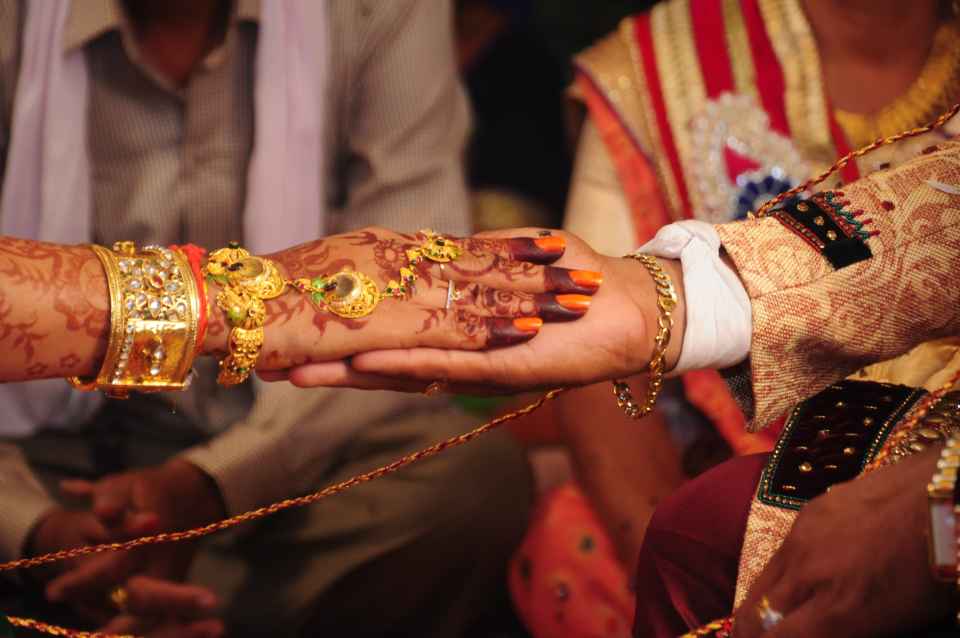
What is the correct order of a Muslim wedding ceremony?
Following is the order in which a Muslim wedding ceremony is conducted:
Nikah
Dubbed as the main wedding ritual, the Nikah is carried out in the presence of a Maulvi (a Muslim priest). The men attending the Nikah are asked to sit around the groom, and the women must gather themselves around the bride. The family of the groom offers the bride Mehr and asks for her consent to the marriage. The Maulvi recites prayers from the Quran.
The Ijab-e-Qabool (ijab: offer; qubool: consent) is one of the most important rituals followed during a Muslim wedding. The bride and groom are made to sit at a distance from each other. The Maulvi asks them whether they accept each other as husband and wife. They are asked to say ‘Qubool Hai’ thrice to give their consent to their marriage.
Signing the Nikah Nama
The ‘Nikah Nama’ ritual is carried out after this. A Nikah Nama serves as the official marriage contract in a Muslim wedding. The bride and the groom put their signatures on the Nikah Nama. In the meantime, the Maulvi recites verses from the Quran and informs the couple about the duties they have to undertake after their marriage.
Arsi Musharaf
Finally comes the time when the bride and groom are granted permission to look at each other. A mirror is kept between the couple and they see each other’s faces through it.
Rukhsat
Emotions run high during the Rukhsat ceremony, as this is the time when the bride bids goodbye to her family. With her husband, she leaves for her new home where she will be greeted by her in-laws.
Header photo © Victoria Priessnitz / Unsplash
